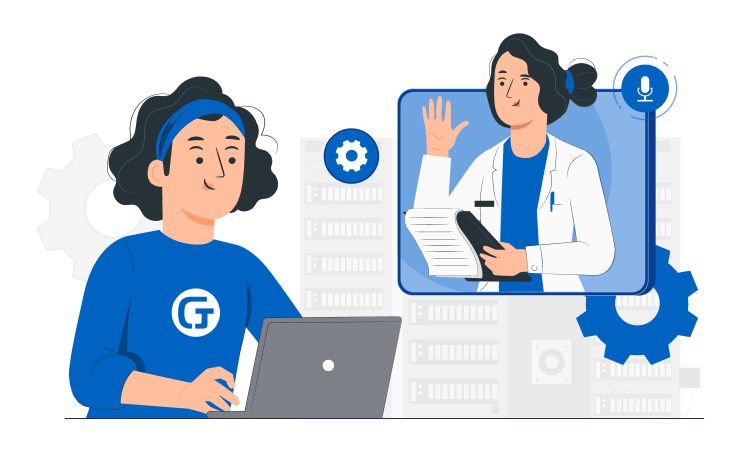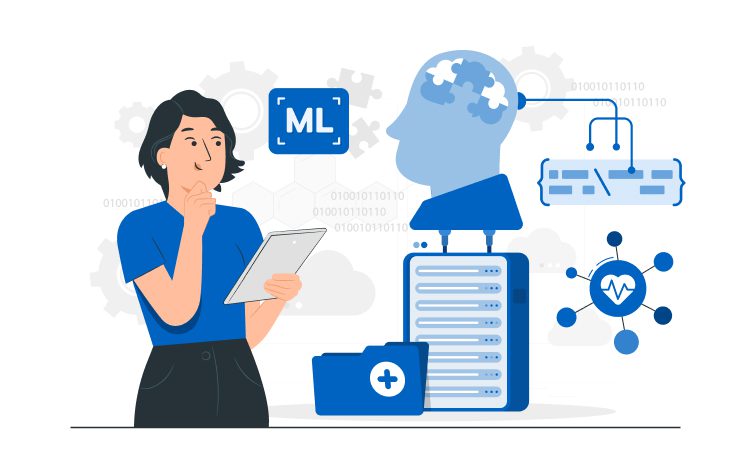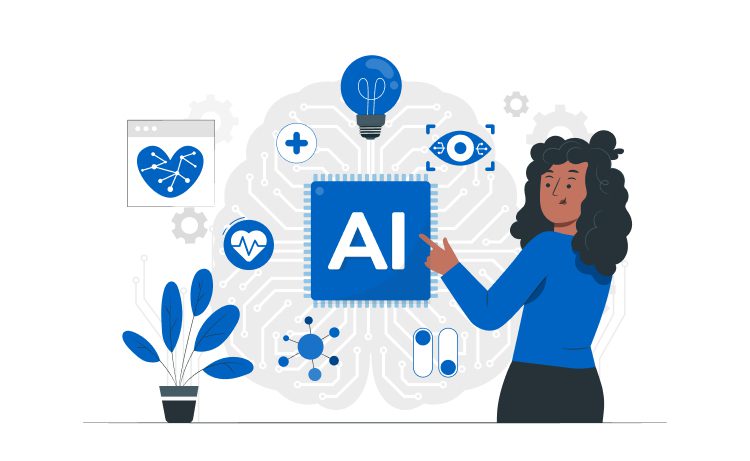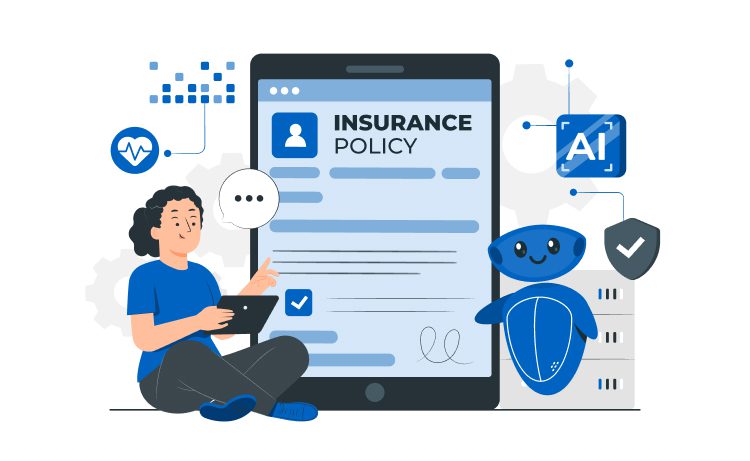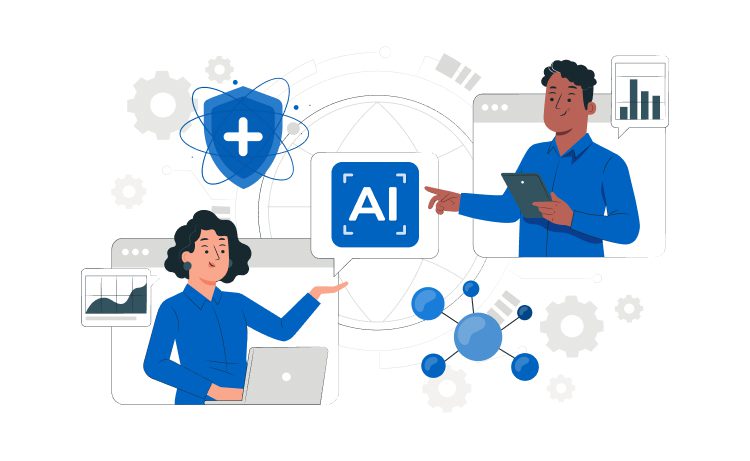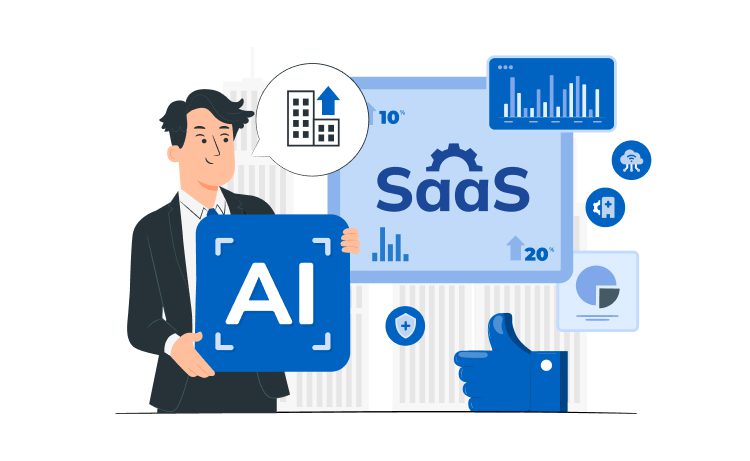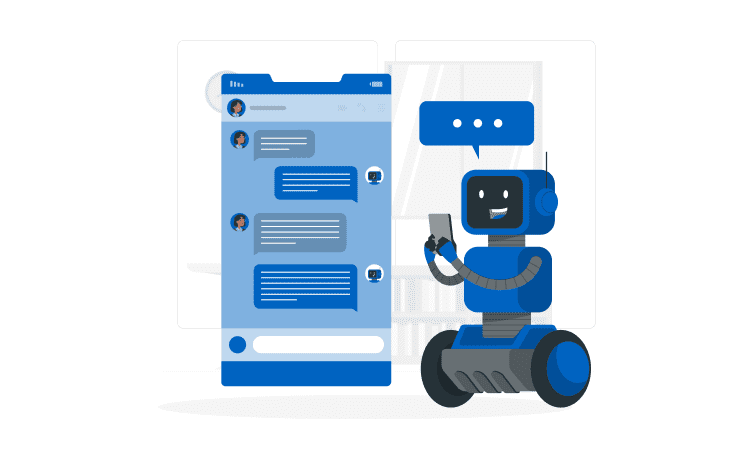
How to Build Healthcare Chatbots



Chatbots and virtual assistants are becoming extremely common in the healthcare industry as a result of multiple factors, such as the increased rate of remote care, more awareness among patients, the pressing need for personalization, a growing interest in 5G technology and artificial intelligence. Why is a chatbot in healthcare a quick and easy way to provide your customers with all the necessary information? What are the benefits and key challenges of medical chatbots? Let’s take a look at all of these questions.
Content
Chatbots are AI-enabled software tools that can interact with humans and facilitate conversations via a chat interface. Chatbots may be found on websites, in applications, and in messaging. Advanced AI assistants can accommodate a variety of conversational styles, handle a large volume of data, and conduct machine learning.
Essentially, medical chatbots should have a set of distinctive capabilities to ensure the required service level and accuracy, which is critical to the industry. These features may include voice assistance, a knowledge center, appointment scheduling, a 24/7 presence, and much more.
Over time, an increasing number of patients have indicated an interest in keeping track of their health. As a result, artificial intelligence has risen to the occasion to meet this expanding need. Virtual assistants with artificial intelligence can considerably enhance the entire patient experience and treatment quality.
Read more about reasons to implement machine learning in healthcare.
Chatbots and virtual assistants may do things like complete chores, offer health updates and insights, handle patient requests, check medication regimens, and plan appointments. They may even suggest further moves down the line.
Chatbots should ideally be created and utilized to collect and evaluate crucial data, make suggestions, and generate personalized insights.
Medical app investors and producers should prioritize developing effective, responsive, tailored assistants that can be trusted not to leak sensitive patient data.
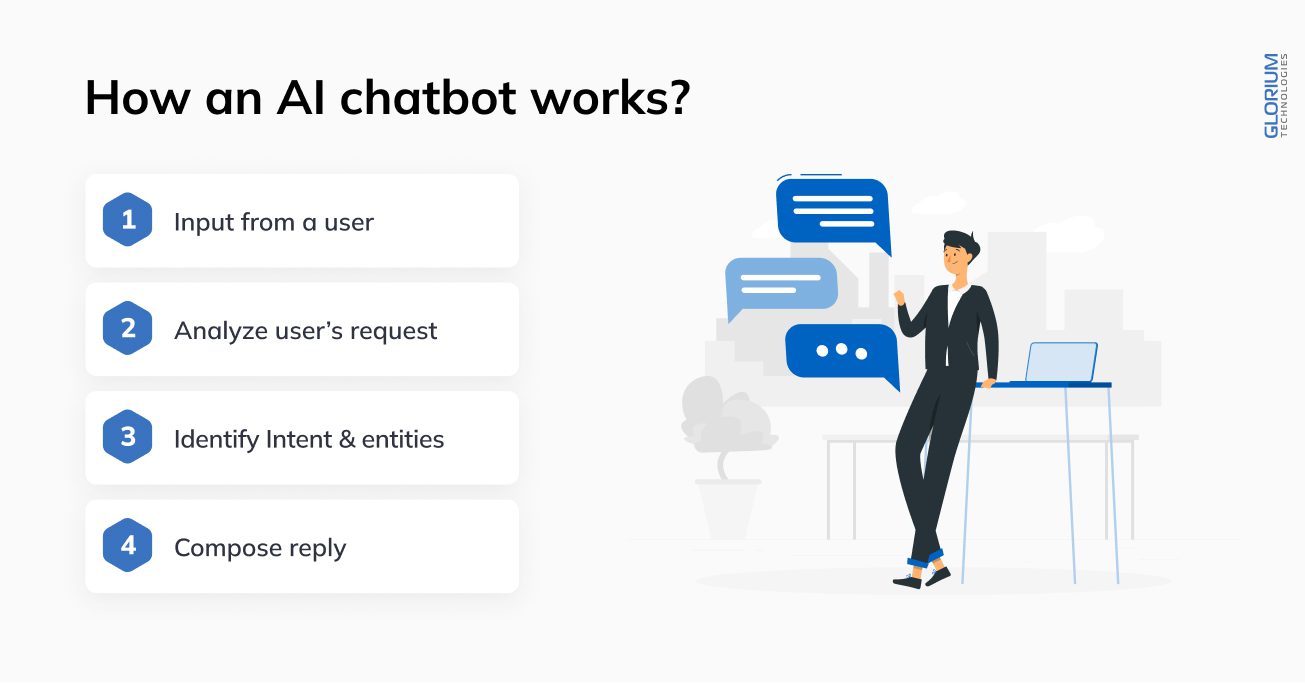
The AI-powered assistants have revolutionized patient care by providing plenty of benefits.

Virtual assistants’ key advantage is that they are available at any time. There are no sick days, bad days, or vacations; it works whenever you want it to. Chatbots’ key goal is to provide immediate assistance when clinicians aren’t available, so adding targeted information that can be delivered upon request will make an assistant more helpful.
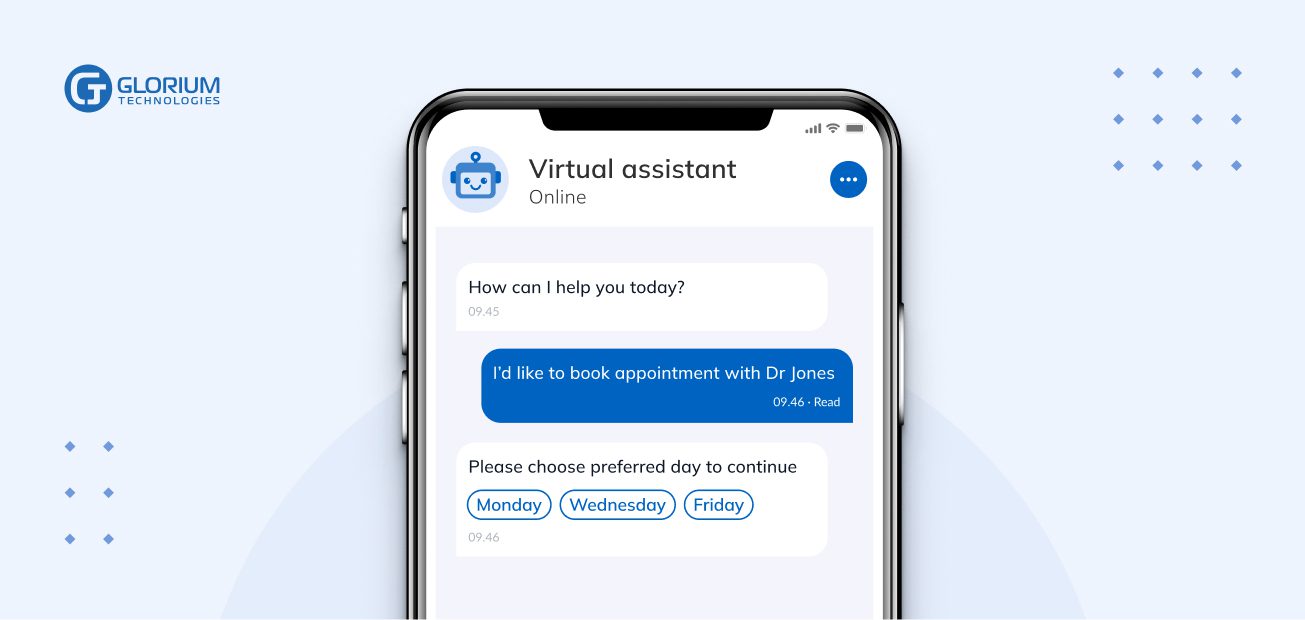
Chatbots can collect and process data in order to deliver a personalized experience for customers. Smart assistants may give you advice, recommend related products or services, and remind you of key dates.

A chatbot that provides simple medical advice and informs patients about their health plan can save costs in several ways:
Medical chatbots can lower costs by reducing unnecessary procedures, visits and hospitalizations, as well as reducing the workload on medical workers. According to a study by Juniper Research, AI-powered chatbots will save $3.6 billion in healthcare costs by 2022.
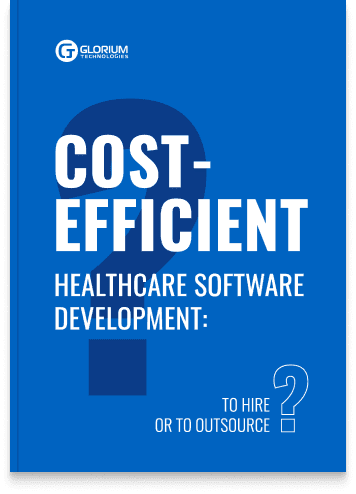
The development of AI technologies in healthcare is of particular importance for the whole world. The key benefits of chatbots in healthcare are that they can free up professionals’ time for more important tasks.
The therapist often spends about a third of the total appointment time collecting anamnesis. Thanks to the chatbot, this time is almost halved. For doctors, this adds up to much time saved over the course of an average day.
Oftentimes, seeking medical attention can be intimidating, even with minor or routine procedures. With the help of chatbots, you can select a doctor for a consultation via chat or video communication, save health data and share it with the selected specialist.
Read more about the benefits of chatbots.
Healthcare chatbots allow patients to monitor their treatment by actively interacting with the bot at any time, including monitoring indicators and maintaining an electronic medical record. According to the forecasts, the remote patient monitoring (RPM) market will count 70.6 million by 2025.
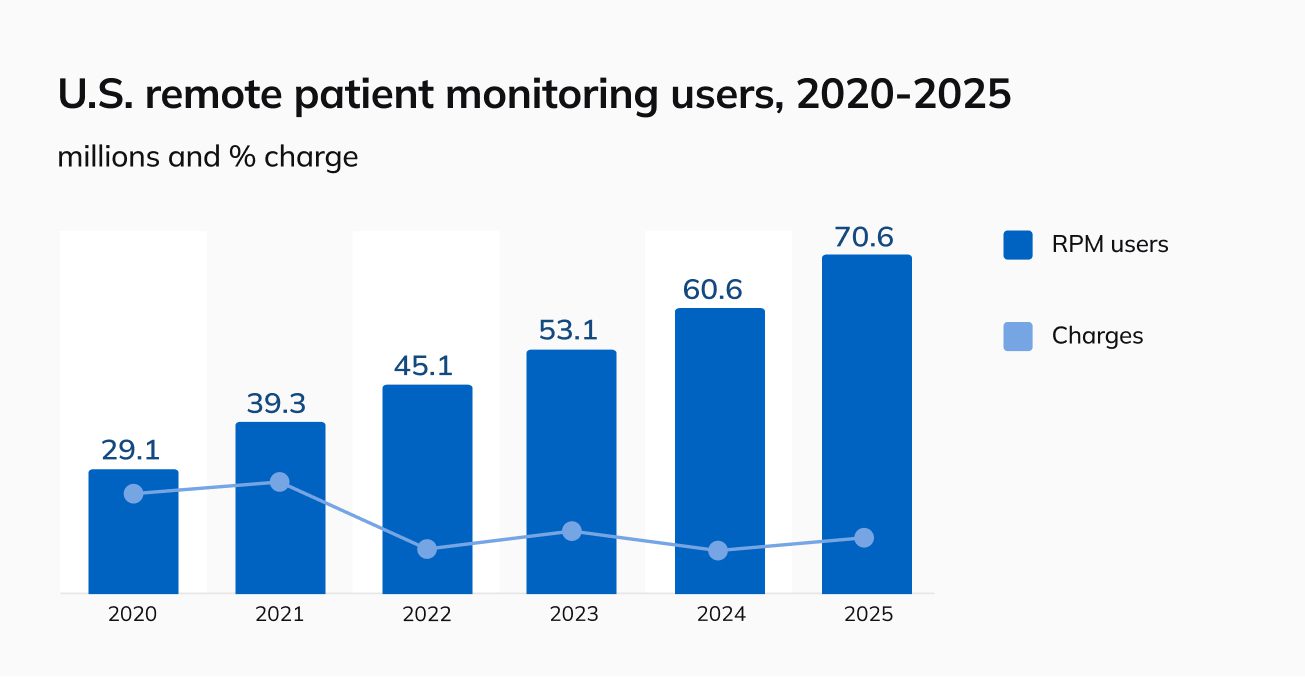
Building healthcare chatbots involves numerous steps, each critical to ensure the chatbot is efficient, compliant, and user-friendly. Here’s an ultimate guide on how to build healthcare chatbots:
Clearly define what you want the chatbot to achieve. Is it for appointment scheduling, patient triage, health tips, medication reminders, or providing general medical information? A well-defined scope helps design a chatbot that meets specific user needs without overcomplicating its functionality.
Design the chatbot with the end-user in mind. Healthcare chatbots often cater to a diverse audience, including patients, healthcare providers, and administrative staff. The design should be intuitive, with a simple and conversational interface. Additionally, ensure the chatbot can handle sensitive conversations with empathy and privacy.
Select the appropriate technology stack. This includes the chatbot development platform, AI and machine learning algorithms for natural language processing, and integration capabilities with healthcare systems. Cloud-based solutions are often preferred for scalability and security.
Implement robust data management and security protocols. Ensure all patient data the chatbot handles is encrypted, securely stored, and complies with healthcare regulations. Access controls and regular security audits are essential to maintain data integrity.
Develop the chatbot using the selected technology stack. Train the chatbot using large datasets of medical queries and responses to ensure it understands and accurately responds to a wide range of user inputs. The training process is ongoing to continuously improve the chatbot’s accuracy and efficiency.
Integrate the chatbot with existing healthcare systems for seamless functionality. This might include Electronic Health Records (EHR), appointment scheduling systems, and other healthcare databases. Integration ensures that the chatbot can provide personalized and accurate responses based on real-time data.
Conduct extensive testing including functionality, user acceptance, and compliance testing. This ensures the chatbot operates correctly, meets user expectations, and meets all regulatory requirements.
Initially, deploy the chatbot in a controlled environment to monitor its performance and gather user feedback. Gradual rollout to a broader audience is recommended to manage the transition effectively. Continuous monitoring is crucial to identify and rectify any issues quickly.
Regularly update the chatbot to reflect changes in medical knowledge, healthcare regulations, and user feedback. Maintenance is necessary to ensure the chatbot remains effective, secure, and relevant.
Establish mechanisms to collect user feedback. This feedback is invaluable for iterative improvements to the chatbot, ensuring it continues to meet user needs and adapt to changing healthcare environments.
Developing medical chatbots comes with its own set of challenges that need to be addressed.
The problem with chatbots in healthcare is that doing simple activities and answering basic queries no longer delivers a satisfying user experience. Ideally, healthcare chatbot development should focus on collecting and interpreting critical data, as well as providing tailored suggestions and insights.
Healthcare product providers should also bear in mind that customers in this field are frequently irritated and anxious, thus a badly worded answer might lead to a more distressing experience than in other industries.
Another point to consider is prediction accuracy: medical services are not an ideal testing ground when it comes to dispensing incorrect medications or making other mistakes.
If advanced chatbots sound excellent from the customer service perspective, there is one big thing that stands in the way of further personalization: data safety. Medical records data are extremely sensitive, and any information used in the healthcare industry is strictly regulated.
Read more how to support digital healthcare compliance with data security measures.
Developing useful, responsive, customized assistants that would also not overstep patient privacy will be a priority for healthcare providers.
Implementing chatbot technology in healthcare simplifies transfer of medical information and interaction between doctors of various fields and medical institutions, significantly reducing the time for processing medical and accounting documents.
AI chatbot for healthcare was introduced into clinical practice in order to free up the doctor’s time to work with the patient as much as possible. Below are the key healthcare chatbot use cases that are already successfully used in modern medicine and diagnostics.
Read more about top 5 use cases for AI in healthcare.

The doctor appointment chatbot simplifies the patient’s process; without the need to call, wait for an answer, and communicate with a clinician, a person saves significant time and stress. This doesn’t mean that the usual forms of registration such as the Internet, mobile apps, or call centers are no longer available.
All these forms of registration, as a rule, continue to work, but now the doctors’ schedule updates are also synchronized with the chatbot. It can also send appointment reminders at a convenient time for the patient.
When using a chatbot, the user indicates complaints and then provides answers to the questions sequentially asked by the chatbot, specifying symptoms and information on their condition. Advanced medical bots are programmed so that each subsequent question depends on the answer to the previous one.
The chatbot may also ask the patient to attach test results or other information useful to the doctor, for example, medical history: allergies, chronic diseases, traumas, and surgeries. All the collected information in a structured form enters the doctor’s interface, where he can familiarize himself with it immediately before the consultation.
Chatbots for hospitals reduce the load on the reception and call center operators, thanks to the ability to serve an unlimited number of people simultaneously.
Thus, the multitasking of bots allows people to understand if they need an appointment with a certain doctor, and then choose a convenient date and time without haste. It can also weed out people who are not interested in a personal visit, and even give initial recommendations for starting treatment.
Chatbot doctors can call patients and invite them for vaccinations and regular examinations, or remind them of a planned visit to the doctor. Chatbots can be trained to answer the most frequently asked questions about an illness, remind you to take medicine, warn about side effects or contraindications, or search for the nearest pharmacy.
Voice assistants accept incoming calls, maintain a dialogue with a person, collect and analyze data, and then transmit it to doctors. By integrating a voice bot with an AI algorithm that can recognize COVID-19 by the patient’s cough, voice, and breathing, it is possible to automate the diagnosis and reduce the need for PCR tests. The virtual assistant is also used to recognize a heart attack by voice. In a recent study, a chatbot medical diagnosis, showed an even higher chance of a problem heart attack being diagnosed by phone — 95% of cases versus a doctor’s 73%.
Using a healthcare chatbot makes it easy to collect patient reviews with a couple of questions. Such an unobtrusive feedback channel allows patients to evaluate the quality of the clinic’s service, assess medical services, or leave a detailed review of services. This helps to improve service levels without wasting customers’ time talking to the operator.
As a healthcare IT company, with over 10 years of experience, we provide a full cycle of AI solutions for a wide variety of healthcare needs.
Our medical chatbots can answer rapid questions from current and potential patients in a FAQ flow to boost patient engagement. The ability to ask questions and receive prompt, interactive responses can improve patient happiness and loyalty. Our chatbots have the ability to examine responses and give them an immediate response to their question.
The process generally involves the following steps when working with an IT outsourcing company.

Simplifying data collection, increasing productivity, and attracting new customers with new technologies has never been easier with Glorium.
Learn more about our healthcare software development solutions today, or schedule a free call with our team for a consultation on the best solution for your needs.
Virtual assistants are on call 24/7/365 and show up whenever you want to talk. They provide initial information support, advice, and reminders about appointments.
Also, the introduction of smart programs in the medical sector allows:
To develop a useful chatbot, you need help from industry experts, and Glorium Tech is a reliable partner for that.
The main categories of smart assistants are:
Every smart aide must abide by ethical restrictions, as well as act in accordance with medical law.
They perform many of the daily tasks of medical professionals automatically, saving time for specialists. For example, chatbots:
As a rule, the development of virtual assistants is carried out in 7 steps:
Ask for help from Glorium Tech experts who will create a chatbot for your clinic, pharmacy, or medical facility within the required time frame.

